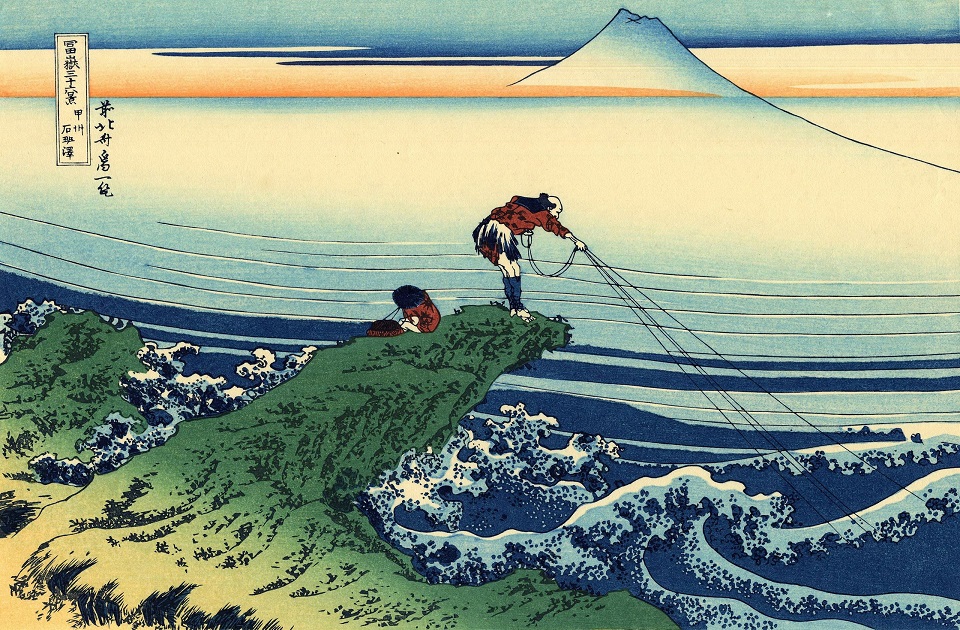Hokusai
Kajikazawa in Kai Province by Hokusai
Kajikazawa in Kai Province is one of the pieces included in Thirty-six Views of Mount Fuji. In this image, Hokusai shows the sacred Mount Fuji in the background as a fisherman and what appears to be his child attend to their nets.
Fishing has always been a significant aspect in Japanese life and comes up often in Hokusai’s art. The way Hokusai drew the immense mountain is much more simplistic compared to other images. The orange color in the sky gives the impression of a sunrise. Perhaps the mountain is only a silhouette because the morning mist has not yet been dissipated by the warm sun. The water is also very calm; anyone who has seen water early in the morning knows the serenity felt during this time of day. The triangle shape of the mountain is echoed in the triangular shape created by the fisherman and his fishing lines. This technique is fairly unique to Kajikazawa in Kai Province, which makes it a significant piece in Hokusai’s incredible collection.
Japanese artist Hokusai is known for his beautiful and technically advanced woodblock and print creations. Born in modern-day Tokyo, then called Edo, he was a prominent artist in the ukiyo-e genre. Hokusai’s most notable body of work is a collection of ukiyo-e art called Thirty-six Views of Mount Fuji. Created in the early 1830s, it is also considered to be the most famous ukiyo-e collection with depictions of Mount Fuji. This is a highly praised collection and includes Hokusai’s most famous pieces: Under the Wave off Kanagawa, South Wind, Clear Sky and Rainstorm Beneath the Summit.
Hokisai was known for having an obsession with Mount Fuji, which is evident in this series as each piece shows a view of the mountain from different areas, in different weather conditions and during all four seasons. In some images, Mount Fuji is at the forefront as the main subject while in other images it can be seen looming in the background with other actions taking precedence as the subject. These actions are normally related to the Japanese lifestyle during Hokusai’s lifetime during the Edo period.
